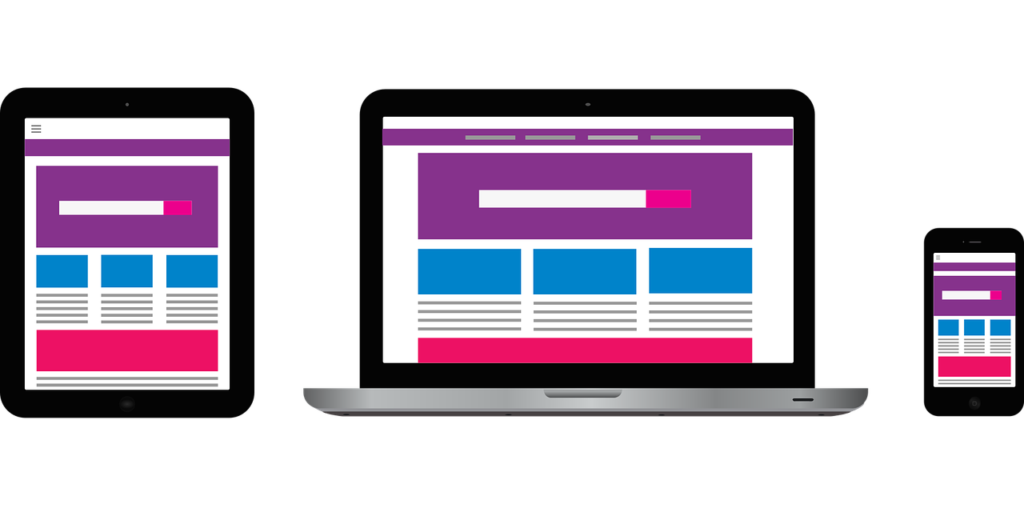In today's digital age, small businesses have the opportunity to utilize social media platforms like Facebook to effectively reach their target audience. By harnessing the power of Facebook advertising, small businesses can easily target specific demographics and ensure that their message is reaching the right people at the right time. Whether it's reaching out to young professionals in urban areas or connecting with stay-at-home parents in suburban neighborhoods, Facebook provides a comprehensive set of tools and features that allow small businesses to tailor their advertising campaigns to their desired demographics. With the ability to set specific parameters such as age, location, interests, and even behaviors, small businesses can maximize their advertising budget and drive meaningful results.

Choosing Targeted Demographics
Defining target audience
One of the most crucial steps in utilizing Facebook advertising to target specific demographics is defining your target audience. Start by considering the characteristics and preferences of your ideal customers. Think about their age, gender, location, interests, and behaviors. By having a clear understanding of your target audience, you can create more effective and targeted ads that resonate with them.
Researching demographics on Facebook
Facebook offers a powerful tool called Facebook Audience Insights, which allows you to research and gather data about different demographics. With Audience Insights, you can explore the demographics of your existing customers or conduct research on potential customers. By analyzing the data provided by Facebook, you can gain valuable insights into your target audience's demographics, interests, and buying behaviors.
Using Facebook's targeting options
Once you have defined your target audience and gathered relevant insights, you can leverage Facebook's targeting options to reach specific demographics. Facebook provides a wide range of targeting options, including age, gender, location, interests, behaviors, and connections. By utilizing these options strategically, you can ensure that your ads are seen by the right people who are most likely to be interested in your products or services.
Creating Engaging Content
Understanding the target audience's preferences
To create engaging content, it is essential to understand the preferences of your target audience. Take the time to research and identify what types of content resonate with them. Are they more interested in videos, images, or written content? Do they prefer educational or entertaining content? By understanding their preferences, you can tailor your content to capture their attention and keep them engaged.
Designing visually appealing ads
Visual elements play a crucial role in creating engaging ads on Facebook. Use high-quality images or videos that are visually appealing and relevant to your target audience. Consider using eye-catching colors and designs to grab attention as users scroll through their feeds. Aesthetically pleasing ads are more likely to capture your target audience's interest and encourage them to take action.
Crafting compelling copy
In addition to visually appealing ads, the copy you use in your Facebook ads should be compelling and persuasive. It is important to communicate your unique selling proposition and highlight the value your products or services provide. Craft your copy in a way that resonates with your target audience's needs, desires, and pain points. Use clear and concise language, and include a strong call to action to encourage users to click on your ad and take the desired action.

Utilizing Custom Audiences
Importing existing customer data
If you already have customer data, such as email addresses or phone numbers, you can import it into Facebook to create custom audiences. By using this feature, you can specifically target your existing customers with ads or exclude them from certain campaigns. This ensures that your ads are reaching the right people and increases the likelihood of driving conversions from your existing customer base.
Using website or app engagement data
Another way to create custom audiences is by utilizing website or app engagement data. Facebook allows you to track and target users who have visited your website or engaged with your app. By installing the Facebook pixel and setting up conversion events, you can collect data on user behavior and create custom audiences based on specific actions taken on your website or app. This data can help you target users who have already shown interest in your products or services.
Segmenting custom audiences
Segmenting your custom audiences allows you to target specific subsets of your audience with tailored ads. Instead of treating all your customers the same, consider dividing them into smaller segments based on their behavior, demographics, or interests. This enables you to craft personalized messages and offers for each segment, increasing the relevance of your ads and improving your chances of conversion.
Exploring Lookalike Audiences
Creating a lookalike audience
Lookalike audiences are a powerful tool that allows you to reach new users who are similar to your existing customers. To create a lookalike audience, you need a source audience, which can be your custom audience or the audience of a Facebook Page. Facebook then analyzes the characteristics of the source audience and finds users who share similar attributes. By targeting a lookalike audience, you can expand your reach and connect with potential customers who are likely to be interested in your business.
Leveraging successful customer segments
If you have identified specific customer segments that generate desirable outcomes, such as high conversion rates or repeat purchases, you can leverage these successful segments when creating your lookalike audience. By using your best-performing customer segments as your source audience, you increase the chances of finding new users who are highly likely to convert. This method can be particularly effective in reaching new demographics that align with the preferences of your existing successful segments.
Expanding reach with similar demographics
When exploring lookalike audiences, it's important to consider expanding your reach with similar demographics. While it's valuable to target users who closely resemble your existing customers, it's also worthwhile to explore similar but slightly different demographics. By expanding your reach, you may discover untapped markets or demographics that could be interested in your products or services. This can lead to increased brand awareness and potential new customer acquisition.

Maximizing Ad Placement
Choosing appropriate ad placements
Facebook offers a variety of ad placements across its platform, including the Facebook News Feed, Instagram, Messenger, and Audience Network. When choosing ad placements, consider the preferences and behaviors of your target audience. If your audience spends more time on Instagram, focus on placements within the Instagram feed. Testing different ad placements can help you identify the most effective channels for reaching your specific demographics.
Utilizing Facebook Audience Network
The Facebook Audience Network is a collection of mobile apps and websites where you can display your ads. By utilizing the Audience Network, you can expand the reach of your ads beyond the Facebook platform and reach users who are browsing or using apps outside of Facebook. This can be an effective way to target specific demographics who may be more active on certain apps or websites.
Optimizing for mobile devices
Given the ubiquity of smartphones in today's society, it is crucial to optimize your ads for mobile devices. Ensure that your ads are mobile-friendly by using responsive designs that adapt to different screen sizes. Consider the placement of text and images to ensure they are easily readable on smaller screens. By optimizing for mobile devices, you can effectively reach and engage with your target audience, wherever they may be browsing Facebook.
Setting Optimized Budgets
Defining advertising budget
Before you start running Facebook ads, it's important to define your advertising budget. Consider your overall marketing objectives, as well as your financial capabilities, to determine how much you are willing to allocate towards Facebook advertising. Setting a realistic and optimized budget ensures that you are investing in a strategy that aligns with your goals and doesn't stretch your resources too thin.
Testing different budget allocation strategies
To maximize the efficiency of your ad spend, consider testing different budget allocation strategies. Facebook offers several options, such as daily budgets or lifetime budgets. By testing different strategies, you can identify which method works best for your business and target demographics. Monitoring the performance and cost-effectiveness of each strategy helps you make data-driven decisions and optimize your budget allocation for maximum results.
Monitoring and adjusting ad spend
Once your ads are live, it is crucial to monitor their performance closely and adjust your ad spend accordingly. Keep an eye on key metrics such as cost per click, click-through rate, and conversion rate. If certain ads or campaigns are not delivering the desired results, consider reallocating your budget to more successful ones or making necessary adjustments to improve performance. Regular monitoring and adjustment are essential for achieving optimal results within your allocated budget.
Implementing Conversion Tracking
Installing Facebook pixel
To measure the effectiveness of your Facebook ads and track conversions, it is important to install the Facebook pixel on your website. The pixel collects valuable data on user behavior, allowing you to analyze the impact of your ads and optimize your campaigns accordingly. By installing the pixel, you gain insights into the actions users take after clicking on your ads, enabling you to refine your targeting and messaging for improved conversion rates.
Setting up conversion events
By setting up conversion events, you can track specific actions on your website that indicate a successful conversion. Whether it's a purchase, lead form submission, or newsletter sign-up, conversion events help you measure the success of your ads in driving desired actions. Facebook allows you to customize conversion events based on your business goals, giving you a deeper understanding of which campaigns are delivering the best ROI.
Analyzing ad performance and ROI
Analyzing ad performance and return on investment (ROI) is crucial in assessing the effectiveness of your Facebook advertising efforts. Evaluate key metrics such as engagement, click-through rate, conversion rate, and cost per acquisition. By tracking and analyzing these metrics, you can identify areas for improvement, optimize your campaigns, and allocate your budget more effectively. Regularly analyzing ad performance and ROI enables you to make data-driven decisions that drive better results.
Utilizing Retargeting Strategies
Targeting website or app visitors
Retargeting is a powerful strategy that allows you to show ads to users who have previously visited your website or engaged with your app. By utilizing retargeting, you can re-engage with users who have shown interest in your business but may not have converted yet. Show them tailored ads that reinforce your value proposition or offer them incentives to return and complete their desired action.
Retargeting based on specific actions
To further refine your retargeting efforts, consider retargeting users based on specific actions they have taken on your website or app. For example, if a user added items to their cart but didn't complete the purchase, you can retarget them with ads highlighting the items they left behind. By retargeting based on specific actions, you can create personalized ad experiences that nudge users closer to conversion.
Creating tailored ad experiences
Tailoring your ad experiences to individual users can significantly impact their effectiveness. Use dynamic ads to automatically show users the products or services they have shown interest in or previously engaged with. This level of personalization creates a more relevant and engaging browsing experience for your target audience. By creating tailored ad experiences, you can increase the chances of capturing users' attention and driving conversions.
Analyzing and Optimizing Results
Evaluating ad performance metrics
Regularly evaluating ad performance metrics is crucial in identifying areas for improvement and optimization. Look at key metrics such as click-through rate, conversion rate, cost per conversion, and return on ad spend. Compare the performance of different ads, campaigns, and target demographics to understand what is working and what isn't. By evaluating these metrics, you can make data-driven decisions and optimize your campaigns for better results.
A/B testing different ad variations
A/B testing involves creating multiple versions of your ads and comparing their performance against each other. By testing different variations of your ads, such as different images, headlines, or calls to action, you can determine which elements resonate best with your target audience. A/B testing helps you refine your ad creative and messaging, ultimately leading to higher engagement and conversion rates.
Optimizing campaigns based on insights
Based on the insights gained from evaluating ad performance and conducting A/B tests, continuously optimize your campaigns for better results. Make data-driven adjustments to elements such as targeting, ad creative, and budget allocation. Regularly review and refine your campaigns, ensuring that you are maximizing the impact of your Facebook advertising efforts. Optimization is an ongoing process that enables you to continually improve and achieve your desired objectives.
Seeking Professional Assistance
Hiring a Facebook advertising specialist
If you find yourself overwhelmed or struggling to achieve desired results with your Facebook advertising efforts, consider hiring a Facebook advertising specialist. These professionals have in-depth knowledge and experience in utilizing Facebook's advertising platform effectively. They can help you develop and execute strategies tailored to your business, target specific demographics, and drive better results.
Utilizing Facebook's business support resources
Facebook offers various business support resources to help small businesses succeed with their advertising efforts. Take advantage of Facebook's Business Help Center, which provides guides, tips, and best practices for using their advertising platform. Additionally, consider joining Facebook's Small Business Group or attending webinars and workshops organized by Facebook to learn from other businesses and industry experts.
Collaborating with marketing agencies
Working with a marketing agency that specializes in Facebook advertising can provide you with a dedicated team focused on driving success for your business. These agencies have the expertise to create and execute comprehensive Facebook advertising strategies that target specific demographics effectively. Collaborating with a marketing agency allows you to leverage their knowledge and experience to achieve your advertising goals more efficiently.
I'm Ed Porada, the founder of VIP Marketing Hub and publisher of the VIP Marketing Hub e-Magazine. Join me in mastering digital marketing through workshops and training. We provide expert insights, top-notch education, strategies, and expertise to boost your brand's online visibility, generate leads, and build effective digital marketing for your business. Let's equip your brand with the essential digital tools and strategies to thrive online and off.

